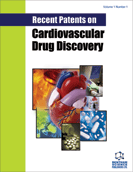Abstract
Maintenance of endothelial cells (ECs), the building blocks of the vascular tree, is a presumed function of fibroblast growth factors (FGFs). In particular, the two prototypic members of FGF family, namely FGF1 and FGF2, due to their potent mitogenic and pro-migratory activities, have the ability to induce metabolic and phenotypic changes in ECs that are required to stimulate angiogenesis. In addition to FGF1 and FGF2, 23 other members of the FGF family have since been identified and characterized and they are reviewed in relation to their disease pathology. Particular emphasis is given to the biology of the FGFs and FGFRs on how they mediate the onset of angiogenesis. The focus of the present review is to survey what is known about the role of the currently identified FGFs and their four high affinity tyrosine kinase receptors in diseases and the angiogenesis-targeted drugs currently in clinical trials. Some new and promising patented drugs that target the angiogenic pathway are discussed. Examination of the currently patented drugs may identify more potent and specific regulators of FGF/FGFR signaling system for treatment of tumor angiogenesis in clinical settings. Additionally, novel drug development strategies are highlighted and reviewed.
Keywords: Fibroblast growth factors (FGFs), fibroblast growth factor receptors (FGFRs), angiogenesis, antiangiogenesis, endothelial cells
 4
4


